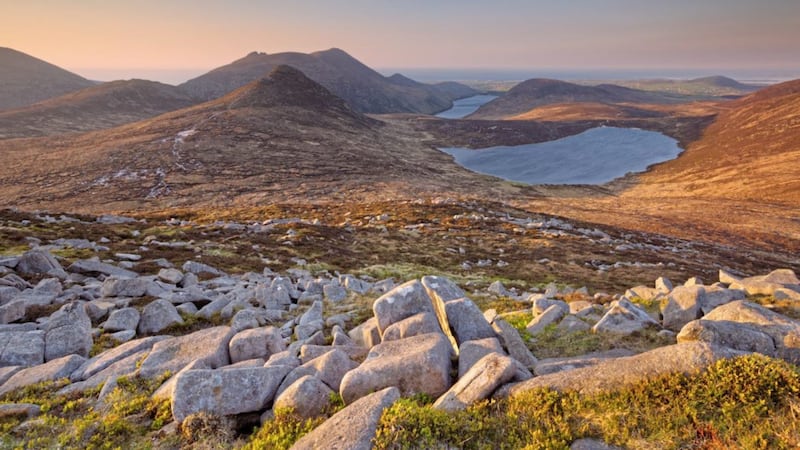WALKING in the mountains on a damp but not too cold November morning, it is easy to be engulfed by the silence. The call of an occasional raven cawing overhead or the wind rustling through the bracken are the only sounds. Then, a low mechanical rumble starts to build and the drone of a plane, hidden by the thick cloud, echoes off the surrounding peaks.
A few years ago, on a warmer day, I puffed my way to the top of Slieve Donard and was taking in the view when a helicopter swooped in. It was like a scene from Apocalypse Now as it juddered just a few feet above my head while those inside had a gawk at me and a couple of other hikers who had spent the last three or four hours hauling ourselves to the summit.
One of the pleasures of remote places is solitude and a bit of head space. That is increasingly difficult to find on our over-populated planet where the vast majority of us live in towns and cities and the imposition of the industrial clanking of jet engines and helicopter blades impose in even the most inaccessible places.
But there is more to this rant than just First World angst about how hard it is to find a bit of peace and quiet: according to The World Health Organisation, noise is one of the most hazardous forms of pollution.
This has been backed up by researchers from Queen's University Belfast who have found noise pollution is threatening the survival of more than 100 different species. The researchers found that noise affects the behaviour of a wide range of species including amphibians, birds, fish, mammals and reptilians.
Dr Hansjoerg Kunc, from the School of Biological Sciences at Queen's and lead author of the report, said: "The study found clear evidence that noise pollution affects all of the seven groups of species and that the different groups did not differ in their response to noise."
The research highlighted a number of threats caused by noise pollution to a range of species that could have implications for survival and population. Many species communicate by producing acoustic signals to choose a mate or warn family members of potential threats such as predators. If noise pollution reduces the ability to communicate this vital information, it will impact on their survival.
The Queen's research found that while noise pollution prevents some animals escaping predators it can also inhibit some animals in their hunt for prey. Animals such as bats and owls rely on the sounds of the potential prey but noise pollution makes it more challenging to hear and find their quarry. According to the research, this forces them to invest more time in sourcing food, which could lead to a decline in these species.
In the aquatic world, fish larvae find their home based on the sound emitted by reefs. Increased noise pollution in the sea, mainly as a result of ships, makes it more difficult for fish larvae to find suitable reefs, meaning many will choose less suitable reefs which could reduce their lifespan.
The researchers found that noise pollution also has a huge impact on the natural migration of animals. Many birds will avoid noise polluted areas during migration which in turn affects where they will establish their long-term homes to raise their young. With fluxes and changes in noise polluted areas, this can affect where birds will choose to live.
These changes in distribution of species can in turn affect ecosystem health, as each species forms an integral part in ensuring that their specific ecosystem continues to function.








